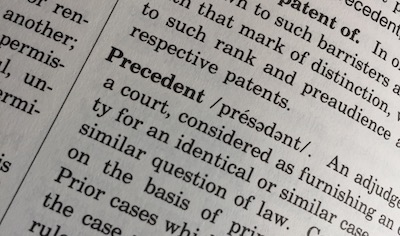UK Decision Provides Guidance on Takedown Notices and Unjustified Threats
“It is important to act early to avoid damage to the brand but you do not want to end up with a costly threats action taking up your time and money.”
A large number of businesses trade through online platforms and marketplaces such as Amazon and eBay. Consumers may believe that because goods are listed on a well-known trusted platform, they are authentic, and the sellers have been approved in some way by the service provider.
Unfortunately, as too many business owners are aware, e-commerce platforms offer counterfeiters and infringers a relatively easy way of offering their infringing goods for sale.
A balance must be struck between forcing online marketplace providers to police intellectual property disputes themselves and allowing businesses to protect their intellectual property rights effectively when they are being exploited via online platforms.
In a recent England and Wales Court of Appeal decision, NOCO Company v. Shenzhen Carku Technology Co Ltd [2023] EWCA Civ 1502, this issue was highlighted in the context of “takedown notices” and whether these could constitute threats of infringement proceedings.
The ‘Takedown Notice’ Procedure
Many online marketplaces, such as Amazon, operate a notification system whereby an intellectual property rights owner can issue a “Takedown Notice”, notifying the marketplace that their intellectual property rights are being infringed by something that is being offered for sale on the platform. eBay operates a VeRO (Verified Rights Owner) program. Amazon’s IPR policy is that it may remove items or pages from its site if they are alleged to infringe a party’s registered trademark.
When is a Threat Unjustified?
A threat is deemed “unjustified” if it alleges a secondary act of infringement (i.e. selling an infringing product) and either no actionable intellectual property right actually exists or no infringement has taken place. A threat can include asking someone to stop using a mark, to deliver the infringing goods or to sign undertakings.
This law is designed to protect businesses against third parties sending out threats of infringement proceedings when there is no genuine cause to do so in an attempt to interfere with the business’ trade, reputation or otherwise.
There is a proviso for communications for a “permitted purpose”, namely limited to giving notice that an intellectual property right exists or requesting information as to who is behind a primary act of infringement. Defenses are available if the threat is found to be accurate, namely that there was or would be an infringing act or if the intellectual property owner has taken all reasonable steps to locate a primary infringer and has notified the recipient of the threat of this.
If a threat is found to be groundless, the threatened business can claim an injunction to stop further threats, damages for any loss caused by the threat, and a declaration that the threat is groundless.
NOCO Company v. Shenzhen Carku Technology Co Ltd
The NOCO case concerned the sale of battery-powered car jump starters by SHENZHEN CARKU TECHNOLOGY CO., LTD (Carku) on Amazon. The defendant, Noco Company (Nocu), held a patent for these goods and issued a “take down notice” to Amazon alleging infringement of its patent by Carku. Amazon found the complaint to be sufficiently grounded and decided to delist the notified Carku products. Amazon also notified Carku distributors that it had removed some of Carku’s products from sale.
Carku filed an action for revocation of Nocu’s patent and also an action for unjustified threats arguing that it had suffered a substantial loss in sales because of Amazon’s delisting.
The first decision focused mainly on whether the patent held by Noco was valid and if so, had been infringed. It was found that the patent was invalid because of the presence of ‘prior art’, and the court found there was no infringement, the threats made by Noco were groundless on the basis of “making a threat where no relevant IPR exists”. See Shenzhen Carku v NOCO [2022] EWHC 2034 (Pat).
Nocu appealed against this decision on the point as to whether the communications made through Amazon’s infringement procedure amounted to a “threat of infringement proceedings” for the purposes of section 70 of the Patents Act 1977.
The Court of Appeal explained that, in accordance with case law, the concept of a threat is a wide one. The test is “what would a reasonable person, with knowledge of the circumstances at the date of the communication, have understood the communication to mean?” Amazon was potentially liable for infringement as a secondary infringer by making a patented product available for sale without the consent of the patentee. It was noted that “the statutory scheme is satisfied if a reasonable person in the position of the recipient would understand that the patentee intends to bring infringement proceedings against “another person”, [i.e. the distributors of the patented product] not necessarily the recipient of the communication”. So, if a reasonable person in the position of Amazon would have understood Nocu’s take down notice to be a threat against itself or the distributors, this would suffice. It was, at the very least, a veiled threat.
Application to IPR Complaints Procedures in General
The Appeal Court was careful to point out that the decision was based on the particular facts of the case and “[i]t is not a general finding about online markets”.
It was noted that despite Noco having a first party (“1P”) relationship with Amazon and that it had been assigned its own Amazon contact as a “category manager”, Noco chose to use Amazon’s IPR notification procedure rather than contacting the category manager in person.
The judge also asserted that: “resort to the IPR complaints procedure may or may not be [understood as a threat], depending on what the complaint says. The “boilerplate” part of the “Infringement Form” simply invites provision of neutral information, the provision of which is capable of being a permitted communication. In this case, it was the Additional Information that went further by positively requesting Amazon to remove the products before any investigation had been carried out.”
The case does stand as a precedent and may apply in cases involving other forms of intellectual property such as alleged trademark or registered design rights.
This decision could have implications for intellectual property rights owners that want to take action to prevent possible infringements of their intellectual property by unauthorized sales on Amazon and other online marketplaces. In many cases, it is important to act early to avoid damage to the brand, but you do not want to end up with a costly threats action taking up your time and money.
Thus, before filing take down notices on platforms such as Amazon, IP owners should ensure that the right wording is used and enlist legal help to investigate and advise on the merits of any alleged infringement to limit the risk of a “groundless threat” action succeeding later on.
Image Source: Deposit Photos
Author: Mactrunk
Image ID: 40145553






